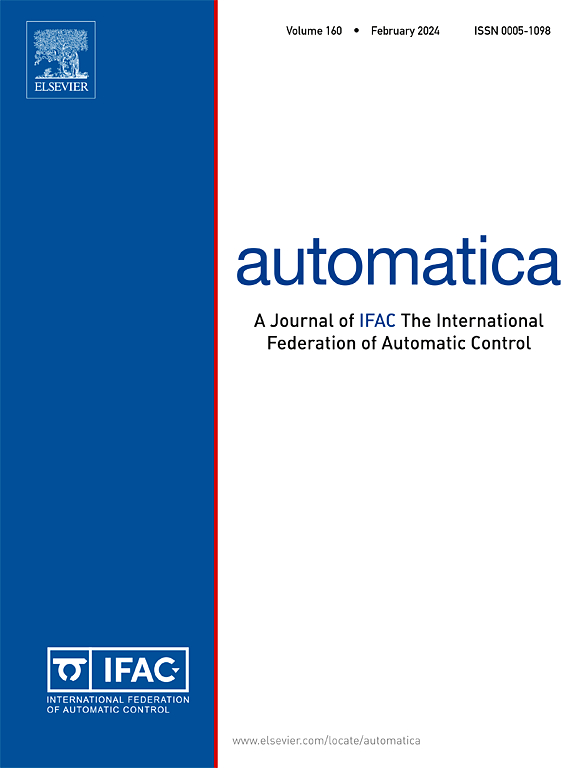Sector stabilization criterion of a novel nonlinear flexible marine riser coupled system
IF 5.9
2区 计算机科学
Q1 AUTOMATION & CONTROL SYSTEMS
引用次数: 0
Abstract
This paper establishes a sector stabilization criterion for a nonlinear flexible marine riser system that incorporates lateral and transverse coupling vibrations, derived from Hamilton’s principle. This criterion, grounded in the sector-bounded condition, encompasses a wide range of linear and nonlinear feedback control laws applied to the transverse and lateral directions at the top boundary of the flexible marine riser, respectively. In the analysis, the nonlinear semigroup theory is utilized to establish the well-posedness of the resulting closed-loop coupled system. Notably, the solution demonstrates continuous dependence on the initial conditions. Furthermore, the exponential stability of the closed-loop coupled system is achieved by employing a generalized Gronwall-type integral inequality and the integral multiplier method, which involves the innovative development of an energy-like functional. To demonstrate the effectiveness of the proposed controls, numerical simulations utilizing the finite element method are presented.
一种新型非线性柔性隔水管耦合系统扇形稳定判据
本文根据Hamilton原理,建立了包含横向和横向耦合振动的非线性柔性隔水管系统的扇形稳定准则。该准则以扇形有界条件为基础,包含了广泛的线性和非线性反馈控制律,分别应用于柔性隔水管顶部边界的横向和横向方向。在分析中,利用非线性半群理论建立了闭环耦合系统的适定性。值得注意的是,解证明了对初始条件的连续依赖。此外,利用广义gronwall型积分不等式和积分乘子方法实现了闭环耦合系统的指数稳定性,其中涉及到类能量泛函的创新发展。为了证明所提出的控制的有效性,利用有限元方法进行了数值模拟。
本文章由计算机程序翻译,如有差异,请以英文原文为准。
求助全文
约1分钟内获得全文
求助全文
来源期刊

Automatica
工程技术-工程:电子与电气
CiteScore
10.70
自引率
7.80%
发文量
617
审稿时长
5 months
期刊介绍:
Automatica is a leading archival publication in the field of systems and control. The field encompasses today a broad set of areas and topics, and is thriving not only within itself but also in terms of its impact on other fields, such as communications, computers, biology, energy and economics. Since its inception in 1963, Automatica has kept abreast with the evolution of the field over the years, and has emerged as a leading publication driving the trends in the field.
After being founded in 1963, Automatica became a journal of the International Federation of Automatic Control (IFAC) in 1969. It features a characteristic blend of theoretical and applied papers of archival, lasting value, reporting cutting edge research results by authors across the globe. It features articles in distinct categories, including regular, brief and survey papers, technical communiqués, correspondence items, as well as reviews on published books of interest to the readership. It occasionally publishes special issues on emerging new topics or established mature topics of interest to a broad audience.
Automatica solicits original high-quality contributions in all the categories listed above, and in all areas of systems and control interpreted in a broad sense and evolving constantly. They may be submitted directly to a subject editor or to the Editor-in-Chief if not sure about the subject area. Editorial procedures in place assure careful, fair, and prompt handling of all submitted articles. Accepted papers appear in the journal in the shortest time feasible given production time constraints.
 求助内容:
求助内容: 应助结果提醒方式:
应助结果提醒方式:


